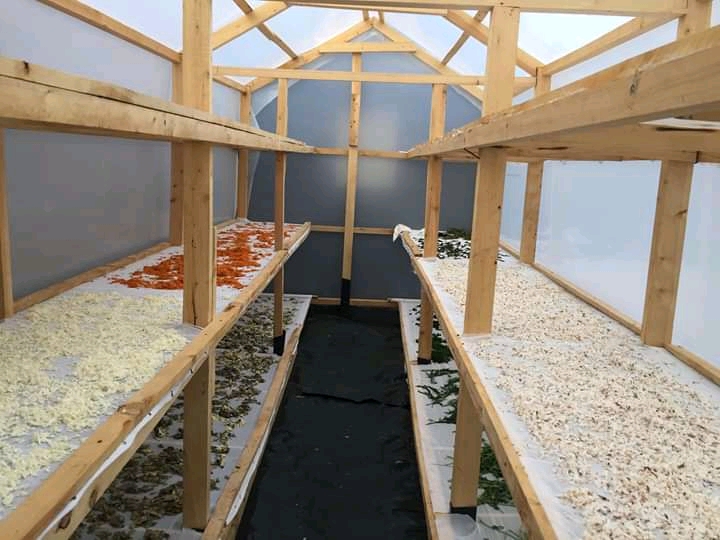
By Fredrique Achieng’
Herb farmers who are drying 200kg of herbs or other vegetables for Sh500 are earning Sh10,000 or more in extra income from the dried products, using the solar drying service from community-based organisation Afya Choice, in Lari, Kiambu County.
The driers are run by Afya Choice as part of their work to help farmers diversify their products and earn better incomes. It takes three days to dry the crops in the solar dryers, which cost farmers Sh15,000 to Sh25,000 to build themselves.
Afya Choice also helps farmers build their own dryers. “A dryer does not need a big space you can build it on a space of 3 by 6 metres. You’d be required to buy drying sheets, polythene film, drying mesh and timber,” said George Gathuru, the Value Addition Officer at Afya Choice.
Related News: Chilli exporter manages strict international market rules by drying the crop
Once a farmer buys the materials, technicians from Afya Choice build the dryer for the farmer for Sh5,000.
However, for those who want to use dryers only occasionally, it offers its own or members’ dryers for rent. The aim is to show producers how easy and effective drying is and how much value it adds.
“What Afya Choice is doing for farmers is really wonderful. I used to dry my chili with them, but once I discovered it is a process that I could easily do for myself I was able to buy the required material and Afya Choice installed it for me in my farm at Kabete. Right now, I rent it out to people who would wish to dry their crops,” said one of the organisation’s members, Mary Wanjiku.
Wanjiku first started using the solar dryer from Afya Choice in January 2020, but now has six to seven people who come to dry their own crops at her farm. She charges Sh1,000 per day for drying a variety of crops.
Related News: Fish drying racks stem stock loss, doubling prices
According to George, the drying process is really simple. Giving an example of the herb mint, he recommends watering the leaves the day before harvesting. Because the whole plant is edible, then pick it with sufficient stem, as this increases productivity.
After picking off the plant, it is taken through the process of washing and then blanching. This helps preserve nutrients in the plant. For blanching, place the plant into boiling water at 100 degrees for a period of one minute. Then transfer the herb into a cold bath and let it rest for five minutes.
Once the mint has dried, place it on a sheet of paper to allow the leaves to dry, and then place them into the dryer. The dryer should be placed in direct sunlight and away from trees or building to ensure maximum exposure to the sun.
“Using this process of drying, one should be careful not to exceed the temperature of 40 degrees as this helps preserve the flavour oils of the herb”, said George.
“We at Afya Choice aim at getting each of our farmers that are producing in the herbs industry into drying as the value of a dried herb is higher than that of a fresh one, due to the fact that the dried herb has a longer shelf life than a fresh one,” said George.
But as Mary discovered this year, many other crops can be dried too, from chillies onwards.
Afya Choice can be reached on 0701179490
















Comments powered by CComment